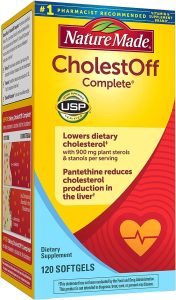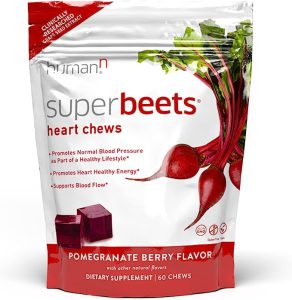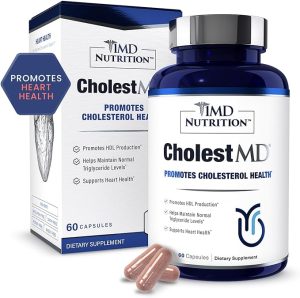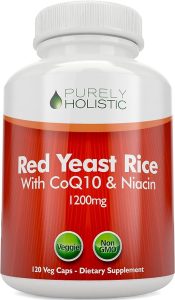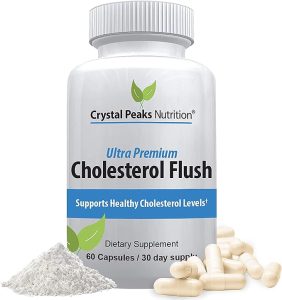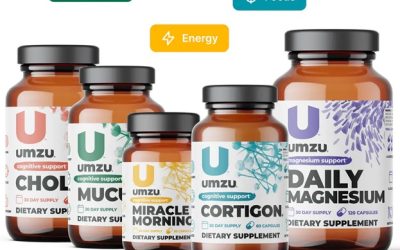Our eyes are not just windows to the soul; they are complex optical systems capturing the world around us.
Composed of more than 2 million working parts, the eye functions like a high-resolution camera. It can distinguish approximately 10 million colors and is capable of rapid adaptation from bright sunlight to dim lighting conditions.
This incredible organ is not only vital for perception but also plays a role in our circadian rhythms and hormonal regulation.
However, within its network of blood vessels, there can be hidden dangers, such as Hollenhorst plaques. These small blockages, often only discovered during an eye examination, can indicate more than just eye health issues; they may also point to possible cardiovascular diseases.
This article will explain what Hollenhorst plaques are, the potential health risks they pose, and how we can take steps to preserve our vision and overall health.
What is Hollenhorst Plaque?
Hollenhorst plaques are tiny, bright, yellow or orange cholesterol crystals that can be seen inside the blood vessels of the retina, the light-sensitive layer at the back of the eye.
They are emboli, meaning they travel through the bloodstream and can become lodged in smaller vessels.
Originating primarily from carotid arteries in the neck or the heart, these plaques enter the retinal circulation and can obstruct blood flow.
There are two main significances of these plaques:
- Local effect on the eye: The blockage of retinal vessels by a Hollenhorst plaque can lead to vision problems. Depending on the location and size of the blocked vessel, symptoms can range from a temporary loss of vision to more permanent damage.
- Systemic implications: The presence of a Hollenhorst plaque is often an indicator of broader cardiovascular issues. The same conditions that cause these plaques to form, such as atherosclerosis, can lead to significant heart and vascular diseases.
In essence, a Hollenhorst plaque is more than just an ocular finding; it’s a signal that there may be underlying cardiovascular conditions that need attention.
Recognizing Hollenhorst Plaque Symptoms
Hollenhorst plaques can often exist without causing any noticeable symptoms, making them difficult to detect without a thorough eye examination. When symptoms do occur, they can be significant and should signal you to seek out medical guidance.
Here are some signs that may suggest the presence of Hollenhorst plaque:
- Sudden Vision Loss: If you experience a quick and unexplained loss of vision, as if a curtain is drawn across your eyes, it could indicate a blockage in the retinal artery.
- Temporary Blindness: Short episodes of vision loss, or amaurosis fugax, can occur, disappearing as quickly as they come.
- No Symptoms: It’s common for there to be no symptoms at all. In these cases, Hollenhorst plaques are often only found during an eye exam.
While these symptoms can be alarming, they are crucial cues from your body.
Though not all Hollenhorst plaques will cause symptoms, if they do, it’s essential to seek medical attention. Detecting these plaques can alert healthcare providers to check for other potential issues, particularly in the cardiovascular system.
Your eyes can be a window to more than just your soul—they can reveal important information about your overall vascular health.
Causes of Hollenhorst Plaques in the Eye
Since Hollenhorst plaques are cholesterol crystals that break loose from larger plaques within the arteries, it’s essential to understand what can cause this to happen in the first place.
Here are some underlying causes that can lead to the formation of Hollenhorst plaques:
- Atherosclerosis: This is the most common source of Hollenhorst plaques. Atherosclerosis is the build-up of fats, cholesterol, and other substances in and on the artery walls (plaques), which can restrict blood flow.
- Heart Conditions: Certain heart conditions, such as atrial fibrillation or valvular heart disease, can increase the risk of forming blood clots that can break apart and travel to the eyes, manifesting as Hollenhorst plaques.
- Carotid Artery Disease: The carotid arteries, which supply blood to your brain and face, can become narrowed due to plaque build-up. Pieces of these plaques can dislodge and travel to the retinal artery, leading to Hollenhorst plaques.
- Hyperlipidemia: High levels of lipids (fats) in the blood, such as cholesterol and triglycerides, can increase the risk of plaque formation.
- Age and Lifestyle Factors: Advancing age, smoking, hypertension, diabetes, and a sedentary lifestyle can all contribute to the conditions that facilitate the formation of Hollenhorst plaques.
Understanding the causes is crucial because the presence of Hollenhorst plaques often indicates that there may be significant atherosclerotic disease elsewhere in the body. This means that individuals with these plaques are at a higher risk for other vascular events, such as heart attack or stroke.
Therefore, finding a Hollenhorst plaque isn’t just about eye health; it’s a wake-up call to assess and address cardiovascular risk factors.
Top 5 Supplements to Lower Cholesterol and Hopefully Prevent Hollenhorst Plaque:
2. humanN SuperBeets Heart Chews
5. CRYSTAL PEAKS NUTRITION Cholesterol Supplement
Hollenhorst Plaque Treatment
When it comes to treatment for Hollenhorst Plaque, it primarily focuses on managing the underlying risk factors to prevent further vascular events, rather than directly removing the plaques from the eye.
Here’s how medical professionals typically approach treatment:
- Monitoring: If a Hollenhorst plaque is detected, doctors will often monitor it over time to check for any changes or developments, especially if it’s not currently causing symptoms.
- Lifestyle Management: To reduce the risk of further vascular incidents, a patient might be advised to adopt a heart-healthy lifestyle. This includes maintaining a balanced diet rich in fruits, vegetables, and whole grains, engaging in regular physical activity, quitting smoking, and managing stress effectively.
- Medication: Depending on the individual’s overall health and risk factors, doctors might prescribe medications like antiplatelet agents or anticoagulants to reduce the risk of further plaque formation and prevent blood clots.
- Surgery: In cases where there’s significant carotid artery narrowing, surgical procedures like carotid endarterectomy may be considered to remove plaque from the artery and prevent future strokes.
- Ophthalmological Interventions: If the Hollenhorst plaque is causing significant vision problems, such as retinal artery occlusion, immediate medical attention is crucial. While there’s no standard treatment for the removal of the plaques from the eye, treatments like ocular massage, lowering intraocular pressure, or using breathing exercises to increase carbon dioxide levels in the blood are sometimes attempted to dislodge or break up the plaque.
- Regular Follow-ups: Regular check-ups with both an ophthalmologist and a primary care physician or cardiologist are important to monitor eye health and manage any cardiovascular conditions.
The Hollenhorst Plaque treatment plan needs to be individualized and often involves a multidisciplinary approach.
This includes ongoing communication between the patient’s eye care professional, primary care physician, and possibly a cardiologist to ensure that all aspects of the patient’s health are considered and managed effectively.
How Does it Work to Get a Hollenhorst Plaque Ultrasound?
Getting an ultrasound for Hollenhorst plaque involves a simple, painless process.
Here’s a summarized breakdown of the procedure:
- Preparation
- No fasting or special prep is needed.
- Wear comfortable clothing and possibly a gown.
- Remove jewelry or other items that might interfere with the scan.
- During the Ultrasound
- You’ll lie on an examination table, with your neck exposed.
- A technician applies gel to your neck to aid sound wave transmission.
- Using a transducer, the technician captures images of your carotid arteries.
- Duration
- The entire session takes about 30-60 minutes.
- Post-Procedure
- You can immediately return to daily activities.
- No recovery time is needed.
- Results
- A radiologist reviews the images.
- Your doctor will discuss the results and any necessary next steps.
This ultrasound is critical for identifying potential sources of Hollenhorst plaques, which can lead to more serious conditions if not monitored and managed.
Hollenhorst Plaque Management and Prevention
Effectively managing and preventing Hollenhorst plaque involves a multi-faceted approach aimed at maintaining optimal vascular health and reducing the risk of further emboli formation. Here’s a comprehensive outline of strategies:
- Healthy Lifestyle Choices
-
- Adopt a balanced diet rich in fruits, vegetables, whole grains, and lean proteins.
- Engage in regular physical activity to improve circulation.
- Maintain a healthy weight to reduce strain on your blood vessels.
- Medical Management
-
- Control underlying conditions such as hypertension, high cholesterol, and diabetes.
- Follow your doctor’s advice regarding medication to manage cardiovascular risks.
- Attend regular health screenings to monitor blood pressure and cholesterol levels.
- Smoking Cessation
-
- Seek support to quit smoking, as it significantly increases the risk of vascular issues.
- Regular Eye Exams
-
- Ensure routine eye examinations to detect changes or the presence of plaques early.
- Ophthalmologists can monitor ocular health and refer to specialists if needed.
- Stress Reduction
-
- Implement stress management techniques like meditation, yoga, or deep-breathing exercises.
- Education and Awareness
-
- Stay informed about your condition and understand the potential risks.
- Know the symptoms that necessitate immediate medical attention.
- Aspirin Therapy
-
- In some cases, low-dose aspirin may be recommended to prevent clot formation.
- Surgical Intervention
-
- In advanced cases, procedures like carotid endarterectomy may be required to remove plaque from the carotid arteries.
By implementing these strategies, you can significantly reduce the risk of complications associated with Hollenhorst plaque, as well as maintain healthier circulation within the eyes and throughout the body.
Always consult with healthcare providers to tailor a management and prevention plan that’s appropriate for your specific health needs.
Hollenhorst Plaque ICD 10: Understanding the Medical Coding
The International Classification of Diseases, Tenth Revision (ICD-10), is a diagnostic tool used by healthcare professionals around the globe to categorize and record diseases and health conditions.
Each health condition is assigned a unique code that standardizes the language around medical conditions, which aids in tracking, billing, and research.
In the context of Hollenhorst plaque, the ICD-10 provides a specific code that helps clinicians and insurers communicate about this condition:
Code H34.8 – Other Retinal Vascular Occlusions
Under this code, Hollenhorst plaque falls into the category of retinal vascular occlusions, which are blockages of the blood vessels that supply the retina, the light-sensitive tissue at the back of the eye.
Understanding the Code
- H: The letter ‘H’ indicates that the code is related to diseases of the eye and adnexa.
- 34: This number refers to the blockage of retinal vessels.
- .8: The decimal and subsequent number indicates a more specific subtype of the condition, which includes emboli like Hollenhorst plaques that don’t fall into the common categories of retinal artery or vein occlusions.
Clinicians use the ICD-10 code for Hollenhorst plaque to:
- Ensure accurate medical record-keeping and patient history tracking.
- Communicate the diagnosis to other healthcare providers.
- Facilitate appropriate billing for medical services.
- Support health insurance claims.
The ICD-10 coding system is crucial for epidemiological research as well, allowing for the monitoring of the prevalence and incidence rates of Hollenhorst plaque, which can guide future medical advice and patient care strategies.
What To Do if a Hollenhorst Plaque Retina is Discovered During an Eye Exam
The unexpected detection of Hollenhorst plaque during an eye examination can be a cause for concern, prompting questions about the implications for both eye health and overall cardiovascular well-being.
If a discovery like this is made, it’s important to take informed and proactive steps.
Here’s what to do:
- Seek Specialist Care: Follow up with a retinal specialist or neuro-ophthalmologist for a detailed assessment.
- Medical Assessment: Undergo a full medical evaluation to check for cardiovascular issues that could be related to the plaque.
- Lifestyle Changes: Implement heart-healthy lifestyle habits, such as a balanced diet and regular exercise.
- Medication Management: Review and adjust medications with your healthcare provider to control any vascular risk factors.
- Regular Eye Exams: Keep up with scheduled eye appointments to monitor the condition and any changes in vision.
- Learn About Your Condition: Educate yourself about Hollenhorst plaques to make informed health decisions.
- Know When to Seek Help: Be vigilant for emergency symptoms like sudden vision loss and seek immediate medical attention if they occur.
Zoppler is reader supported and may earn affiliate commissions from links on this page. We support and believe in all the products and services we promote and are affiliated with.


